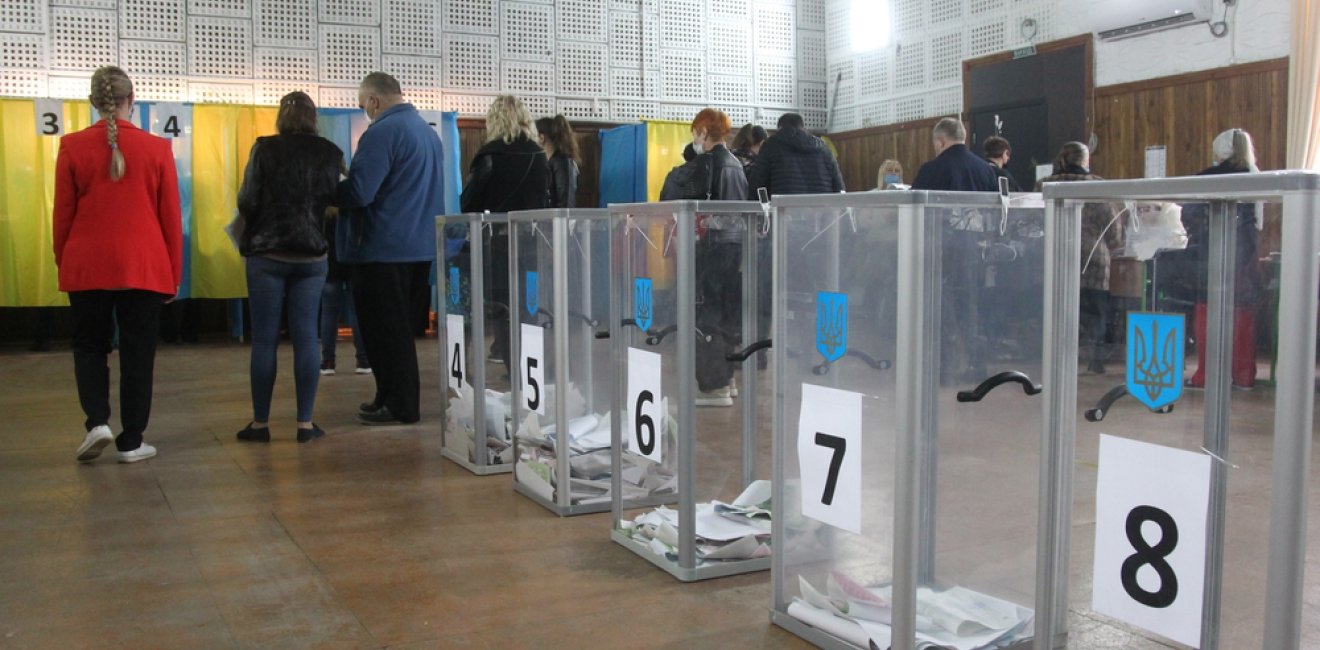By Michael C. Keays
Regardless of whether sham referenda in Russia-controlled regions of Ukraine reflect weakness or not, the successful conduct of such so-called referenda – if they are carried out over the next several days – will significantly complicate the situation on the ground in Ukraine and efforts to resolve the conflict in the future, should conditions allow for that.
As most observers of Russia’s war against Ukraine point out, if the phony plebiscites are held in the currently Russian-controlled regions of Donetsk, Luhansk, Zaporizhya, and Kherson, they likely will result in vote tallies favoring annexation by Russia. Regardless of their legitimacy, these votes would be quickly acted on by Russia’s legislature, which would vote to annex the regions, effectively making them Russian territory in the eyes of the Kremlin and its supporters. This would then provide the so-called “legal pretext” for Russia to make unspecified adjustments to defend the territories at all costs – something President Putin warned he would do in his February 24 speech announcing his “special military operation” in Ukraine.
As observers rightly note, it is expected that most countries of the world would not recognize this so-called annexation, just as they have not recognized the so-called annexation of Crimea. Secretary of State Blinken was unequivocal about this in his September 21 comments on the proposed referenda prior to a meeting with his UK counterpart on the margins of the 77th UN General Assembly, and President Biden asserted in his address to the UNGA on the same day that such sham referenda would not only be viewed as outrageous acts, but constitute significant violations of the UN Charter. In response to these declarations, defense of these newly acquired “Russian lands” by Russia could help the Kremlin to further make the case to the Russian people of the real need to call up over 300,000 reservists for service in Ukraine, and to justify consideration of the use of tactical nuclear weapons to deter attempts by Ukraine to re-take them.
In this way, the sham referenda – if they are carried out – will change the so-called “facts on the ground,” a tactic that conflict negotiators frequently point to as a way to alter the speed or course of negotiations aimed at ending conflicts. While such a change of the “facts on the ground” in the four above-named eastern and southern regions of Ukraine could cause a pause in fighting while the conflicting parties reassess the new reality and adjust tactics, the change in situation could potentially provide President Putin the justification for halting a westward push, pulling his forces back into the new “Russian lands,” and effectively ending the “special military operation.”
In this scenario, Ukraine would effectively lose 15 percent of its territory, and Russia would obtain the land bridge to Crimea that it has desired since it seized that strategic region of Ukraine in 2014. We could expect the Kremlin then to either declare victory and tend to its wounds and try to stabilize the situation in the new territories and within Russia itself, or to do that and also call on the West to end its support for continued hostilities and join Russia at the negotiating table to recognize the new reality and rebuild relations based on this.
Such a scenario as described above would be very similar to the USSR’s annexation of the Baltic countries in July 1940, and the West’s rejection of their annexation for almost 50 years afterwards – Washington’s through the famous “Welles Declaration.” Nothing of great substance transpired after their annexation to turn things around for them – mainly due to the Molotov-Ribbentrop Pact and the outbreak of the Second World War, but also because the U.S. and its Allies were not in a position, on the ground, to change the situation. Eyeing the Baltics hungrily, Stalin was clearly more committed to seizing them than we were to their freedom, had the upper hand, and was ready and able to act. The U.S. and its Allies were not. Geography clearly advantaged the USSR, too.
The best the U.S. could do under the circumstances was to adjust its diplomatic engagement with the USSR and the Baltic countries in an effort to deny legitimacy to the Baltics’ annexation and serve as a safe-haven for future Baltic leaders. The most tangible results of that act were maps with dotted lines and asterisks explaining that the U.S. never recognized the three small countries as belonging to the USSR. It was not until March 1990 through August 1991 that the three countries would gain their independence from the Soviet Union – with our refusal to recognize their annexation still firmly in place. So-called facts on the ground and ground truths can be stubborn and terribly frustrating, even while we pretend they don’t exist, or make distinctions between de jure and de facto.
Over the centuries, Russia has made an art form out of creeping forward like a hunter and seizing territory using a mix of fighting on the ground followed by establishing new political realities. Its oversized sense of self, backed up by its menacing image, willingness to use its sophisticated weapons, and proclivity to make nuclear threats, has helped. Its Achilles heel, time and again, has proven that peoples’ memories are long, and they don’t like to be occupied by other people. The American diplomat and Russia expert, George F. Kennan, recognized this and grounded his Containment Theory on faith that time would work against the Soviet Union as an occupier. His faith turned out to be sound. Germany eventually re-united after facts started changing quickly on the ground. The Baltic and Caucasian republics started pressing for their independence once they realized that the occupier could not stop the unzipping of the USSR and was no longer committed to using force in order to hold onto them.
Even if Russia’s current war against Ukraine turns into one in which a significant portion of the country lies outside of Kyiv’s control for an indefinite period of time, history would suggest that this manufactured reality would eventually fall apart. The Ukrainians, firm in their sense of self – a sense forged in their fight for survival – will inevitably overcome Putin’s occupying Russia, which will always doubt its hold on whatever portion of Ukraine it controls at a given moment.
So-called successful sham referenda for President Putin may appear as a victory and will certainly be portrayed that way, but will prove pyrrhic over time – a factor which none of us control. In the meantime, it will be important to note the shift from the military struggle to the political one, and carefully adjust tactics in all domains of the battle space – military, political, economic, social, and informational.
Michael C. Keays is a Senior Diplomatic Fellow at The Kennan Institute of the Wilson Center. While the author is on detail to the Kennan Institute, the views are his own and do not necessarily reflect the views of the U.S. Government or The Wilson Center.
Author

Senior Foreign Service Officer, US Department of State

Kennan Institute
After more than 50 years as a vital part of the Wilson Center legacy, the Kennan Institute has become an independent think tank. You can find the current website for the Kennan Institute at kennaninstitute.org. Please look for future announcements about partnership activities between the Wilson Center and the Kennan Institute at Wilson Center Press Room. The Kennan Institute is the premier US center for advanced research on Eurasia and the oldest and largest regional program at the Woodrow Wilson International Center for Scholars. The Kennan Institute is committed to improving American understanding of Russia, Ukraine, Central Asia, the South Caucasus, and the surrounding region through research and exchange. Read more

Explore More
Browse Insights & Analysis
Infographic | Russia's Illegal Annexation of Crimea

Talking to the Dead to Heal the Living


